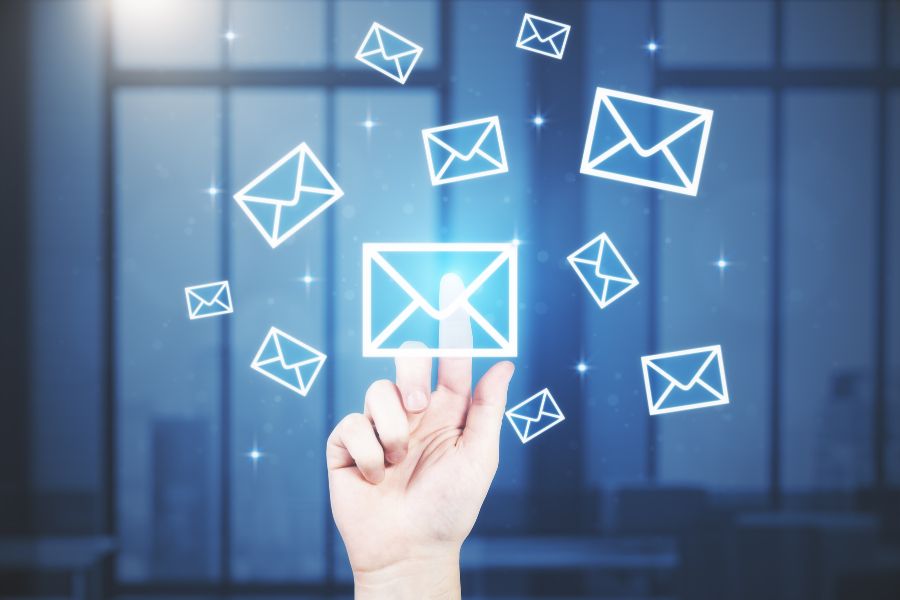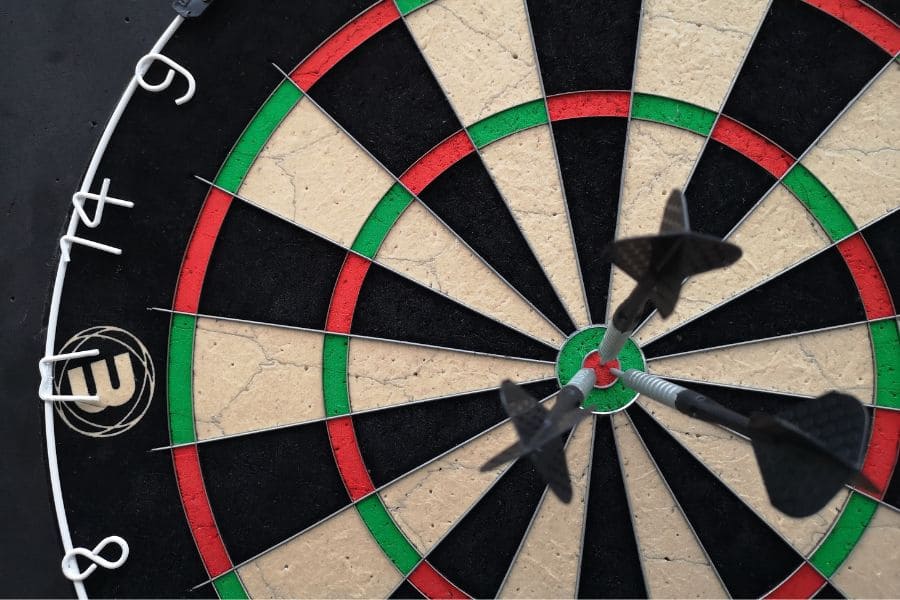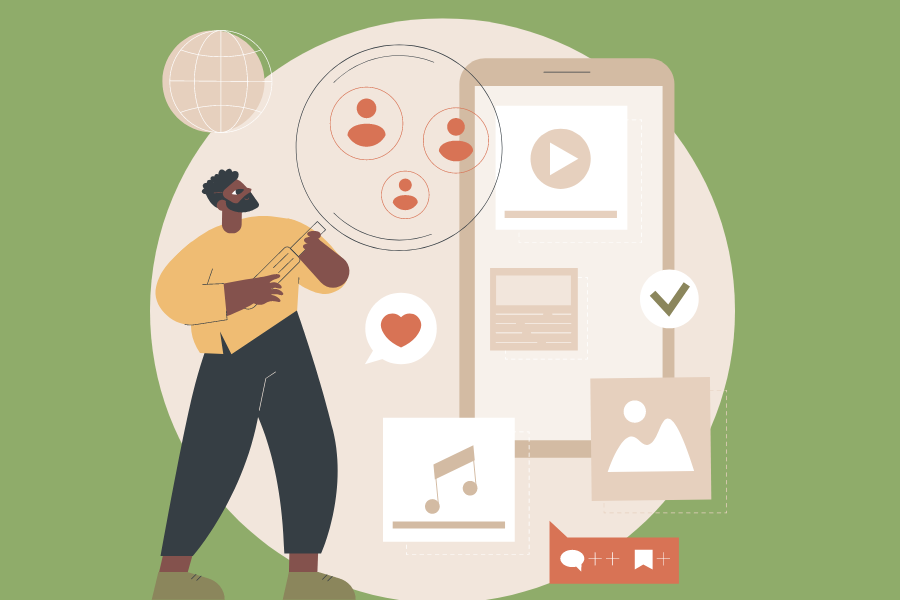Are you leaving money on the table by neglecting email retargeting?
Let’s fix that!
In this guide, we’ll show you how to harness the power of email retargeting to boost sales and build customer loyalty.
Just imagine the thrill of seeing the sales flood in, all through the magic of a well-crafted email campaign.
Ready to unlock a whole new world of marketing potential?
Let’s begin!

What is Email Retargeting?
Basically, email retargeting is an email marketing campaign used by marketers to remind prospective customers about their brand and entice them back to their website or product.
It’s all about reaching out to those existing customers who’ve interacted with your brand before but haven’t (or haven’t recently) taken action.
But why does it work?
Psychologically, humans prefer things that are familiar. In digital marketing lingo, this is called the ‘mere-exposure effect.’
Here’s an analogy…
Picture that old familiar coffee shop you always seem to gravitate towards. It’s comfortable, it’s known.
And if you’re like most people, you would rather get your morning cup o’ joe from that shop, even when there are new, possibly trendier, places to explore.
In the same way, your brand becomes that ‘familiar place’ to customers through email retargeting.
And the data backs this up too!
A Stanford study revealed that a website visitor who was retargeted with display ads is 15% more likely to return to a website they left.
“But hold on,” you might be thinking, “Isn’t this a little…stalker-ish?”
Don’t worry, proper email retargeting is not about spamming or cyber-stalking.
Done right, email retargeting can be a non-invasive way to provide tailored, relevant content to your target audience and increase the likelihood that they’ll buy from you. It’s a win-win for everyone!
When Should You Use Email Retargeting? 10 Best Practices That’ll Enhance Your Bottom Line

Okay, so now that you know email retargeting has some solid merits, you’re probably wondering when to do it? In what situations should you send retargeting emails to potential customers?
Here are 10 examples of situations where email retargeting could benefit both you and your customers…
1. When a Potential Buyer Has Left an Abandoned Cart
Imagine a customer, let’s call her Jill.
Jill has filled her online shopping cart but leaves before checking out. Maybe her baby started crying, or her boss sent a last-minute assignment, who knows?
The sad truth is, she was about to buy, but the distraction made her forget, and the longer she stays away, the less likely she is to finalize her purchase.
With email retargeting, you can send a gentle reminder to Jill about her abandoned cart, maybe even with a small discount, nudging her to complete the transaction.
Now Jill has the items she wants, and you have another paying customer, all thanks to one humble retargeting email.
2. When You’d Like to Re-Engage a Past Customer
Or take hypothetical customer Joe, who bought a pair of shoes from your website a while back.
Six months later, you haven’t heard a peep from him.
Why not send a retargeting email showcasing your new collection or a loyalty discount?
Joe has the opportunity to spiff up his shoe wardrobe, and you get the satisfaction of not just selling a product, but rekindling a positive old connection.
3. When You’d Like to Upsell (or Cross-sell) a Supplemental Product
Now, let’s say a new customer, Jack, purchased a camera from your site a day ago.
With email retargeting, you can cross-sell by suggesting complementary items like a camera bag or an extra lens.
You’re making Jack’s life easier and your cash register happier, too.
4. When a Customer Shows Consistent Interest in Your Product
Now let’s say customer Janie frequently visits your website and lingers on the same product page every time. She’s clearly interested, but hasn’t taken the plunge to purchase.
With email retargeting, you can send Janie an email about the product she’s eyeing, providing additional information or even offering a time-limited discount to nudge her towards making the purchase.
5. When it’s Time for a Replenishment

Picture a customer like Jim, who ordered his favorite shaving cream from your website a couple of months ago. If the product usually lasts around two months, it’s probably time for a refill.
With email retargeting, you can send Jim a reminder that it might be time to reorder, maybe with a special offer attached.
It’s a considerate nudge, and Jim will thank you for it.
6. When a Customer Has Recently Interacted with Your Content
Say you’ve got a customer, we’ll call her Julie, who frequently engages with your digital marketing content.
She leaves comments on your blog posts or likes and shares your social media updates. It’s a clear sign of interest in your brand, but oddly enough, she hasn’t made a purchase yet.
With email retargeting, you can send Julie a personalized email based on the content she’s interacted with.
It can be an exclusive blog post, a product recommendation based on her interest, or even a small discount as a thank-you for her engagement.
This way, you’re converting a curious follower into a potential customer.
7. When You Want to Leverage Seasonal Trends

Or take the case of Jake, who purchased a fancy grill from your website last summer.
As the grilling season rolls around again, you can remind Jake about the upcoming grilling season and suggest some new items that would enhance his grilling experience.
With email retargeting, you’re helping Jake gear up for the season and capitalizing on seasonal sales trends!
8. When You Notice Decreased Customer Engagement
Now, picture Jenny, a long-term customer who used to open all your emails and engage with your brand frequently. But lately, Jenny’s engagement has taken a nosedive.
Using email retargeting, you can reach out to Jane to understand why her engagement has decreased.
Perhaps it’s an email asking if she’s still interested in receiving updates or offering a tailored incentive based on her previous purchases.
You’re not only identifying potential issues but also showing Jane that you value her loyalty.
9. When You’re Having a Sale or Special Promotion
Or what if you have a customer named Jessie, who has bought from you during previous sales events? She’s likely to be interested in knowing when the next one is.
With email retargeting, you can keep Jessie in the loop about upcoming sales, so she can snag her favorite items at a discount.
In other words, you’re providing a valuable heads-up and boosting your sales, all at once.
10. When You’re Launching a New Product or Service
Consider customer Jeff who loves your brand and often purchases your new products.
When you’re launching a new product or service, use email retargeting to give Jeff a sneak peek or a chance to pre-order.
You’re making him feel valued as a loyal customer while building excitement for your launch.
How to Set Up Your Email Retargeting Campaigns in 4 Simple Steps

Alright, you’re on board with the ‘why’ of email retargeting and ‘when’ to use it.
But how about the ‘how’?
Let’s get down to the nitty-gritty of setting up a retargeting email marketing campaign…
Step 1: Collecting Customer Data and Segmenting Your Audience
The first step in any successful email marketing campaign is data collection. You need information about your customers’ behaviors, interests, and preferences.
How do you get this information?
Through cookies on your website, customer surveys, transaction history, and browsing patterns.
With cookies, you can collect data like email addresses, purchase history, pages visited, time spent on your site, and more.
Of course, you want to be transparent about this data collection and ensure you’re compliant with all privacy regulations — it’s the right thing to do and will build trust with your audience.
Then, once you’ve got your data, it’s time to segment your audience.
Split your customers into different groups based on their behaviors or characteristics. For instance, customers who abandoned their cart, frequent buyers, or a first-time website visitor.
By segmenting your audience, you can send hyper-targeted emails that resonate with each group, increasing the likelihood of engagement.
Step 2: Creation of Engaging Emails and Retargeting Campaigns
Next up, you’ll need to create engaging emails.
Remember, your retargeted email should offer value and relevance to the recipient. Keep it concise, make your call to action clear, and inject some personality to reflect your brand voice.
And remember that your subject line needs to be compelling enough to get your recipient to click open in the first place.
As for the content of the retargeting campaign, think about your objectives.
Are you aiming to bring back customers who’ve abandoned their carts? Or are you trying to upsell to recent buyers?
Once you know your objectives, tailor your campaign to meet these goals. Include personalized offers and content based on the behaviors and interests of your segmented groups.
Step 3: Tools and Platforms to Help Implement Email Retargeting Effectively

So, what tools can help you set up your email retargeting campaign?
There are quite a few, each with their pros and cons. Platforms like Mailchimp, Brevo, or GetResponse can help you manage your email campaigns, segment your audience, and automate your emails.
For retargeting specifically, tools like AdRoll, Rejoiner, and Criteo can be quite helpful. But do your research to figure out what platform is best for you.
Mailchimp, for example, is beginner-friendly with its easy-to-use interface but might fall short of advanced marketing automation.
AdRoll, on the other hand, offers comprehensive retargeting solutions but might be a tad overwhelming for the uninitiated.
So assess your needs and capabilities before choosing your tool stack.
Step 4: Discuss Essential KPIs to Track and Interpret for Successful Campaigns
Now that your campaign is up and running, how do you measure success?
By tracking the right Key Performance Indicators (KPIs).
Consider metrics like email open rates, click-through rates, conversion rates, bounce rates, and ROI. And adjust your strategy accordingly.
Remember, no campaign is perfect from the get-go. Use these metrics to learn, adapt, and improve your approach.
By consistently monitoring and adjusting your strategy, you’ll be mastering the art of email retargeting in no time.
The Road to Success: Mastering Email Retargeting
Imagine using the retargeting insights you’ve learned to bring back past customers, or convert interest into sales. Visualize reducing cart abandonment, cross-selling effectively, even predicting and adapting to future trends.
It’s not just about the sales you make, but the connections you strengthen.
You’re not just running a small business; you’re creating an experience. You’re no longer just a marketer; you’re a friend who pops up in their inbox, bearing solutions, not just products.
Ready to go light up some inboxes?
On your mark, get set, retarget!



